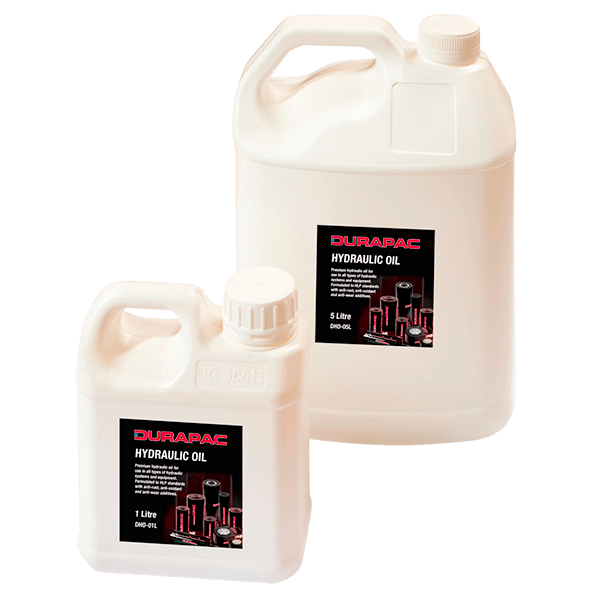Aging-resistant
Durapac Hydraulic Oils are based on high grade, special raffinates and contain additives, which improve their resistance to ageing. As these are long-life characteristics, they also increase the service life of the products.
Good Demulsifying Properties
Durapac Hydraulic Oils rapidly separate water and avoid the formation of water and oil sludge.
Good Elastomer Compatibility
Durapac Hydraulic Oils are tested for 168 hours at 1000C. The materials tested are SRE-NBR 1 standard reference elastomer and vulcanised butanol acrylonitrile. Seal material manufacturers use the values obtained from these materials to evaluate the compatibility of other elastomers with the hydraulic fluid being tested. Elastomers show good compatibility with Durapac Hydraulic Oils.
Excellent Corrosion Protection
Durapac Hydraulic Oils contain surface-active ingredients, which wet steels and non-ferrous metal surfaces and protect them from corrosion when water is present.
Good Viscosity - Temp. Behaviour
The good viscosity/temperature behaviour of Durapac Hydraulic Oils guarantees rapid and reliable start-up as well as sufficient viscosity of higher running temperatures. The latter ensures that a protective lubricating film is formed on all moving parts, that reliability is increased and that the oil provides sufficient sealing in the hydraulic system.
Wear Protection
Durapac Hydraulic Oils contains extreme power (EP) additives, which reduce friction and thus protect sliding surfaces against wear. The DIN 51 389 “Mechanical testing of hydraulic fluids in rotary vane pumps” tests the anti-wear properties of hydraulic fluids. All Durapac Hydraulic Oils passed this test and all achieved load stage 12 in FZG Gear Rig Test A/8.3/90 (DIN51 354).
| Property | Unit | 32 |
|---|---|---|
| Kinematic Viscosity @100 °C | cSt | 5.36 |
| Viscosity Index | - | 100 |
| Specific Gravity @ 15 °C | Kg/L | 0.875 |
| Flash Point, COC | °C | 190 |
| Pour Point | °C | -27 |
| Total Acid Number | mg KOH/g | 1.0 |
| Saponification Number | mg KOH/g | 1.2 |
| Sulfated Ash | % w/w | 0.2 |


